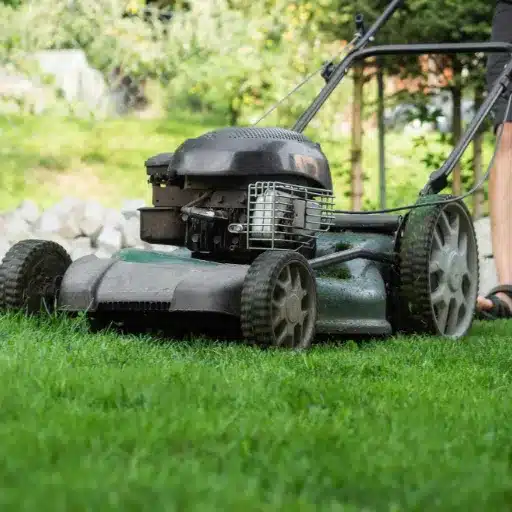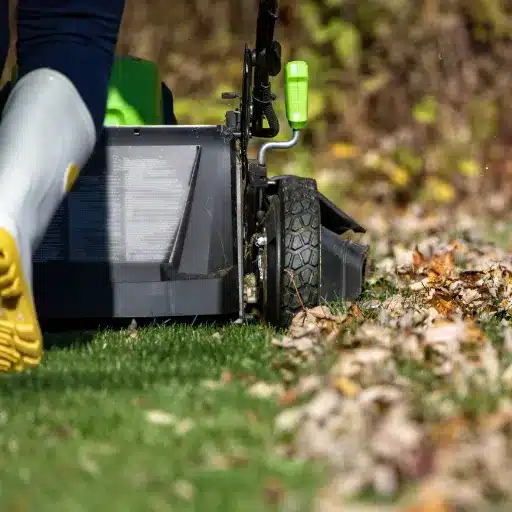Embroidery is an old skill that has become a hobby for many people, letting them turn fabric into better art pieces. With that being said, in this blog post, we go through border designs of machine embroidery, which are perfect for finitely embellishing your projects. Now, machine embroidery is advanced due to new technology, which means high accuracy and uniformity, and this enables artisans to create borders that could be applied to shirts and bed linens, even curtains that serve a purpose while adding stylish looks to the fabric. Understanding materials and techniques capable of giving a professional touch will also be covered, such as classical or contemporary styles and many more. If you are already experienced in embroidery or want to start as a beginner, go with us to discover new creative approaches and ideas to raise your embroidery work to another level.
What Are the Different Types of Embroidery Design Formats?
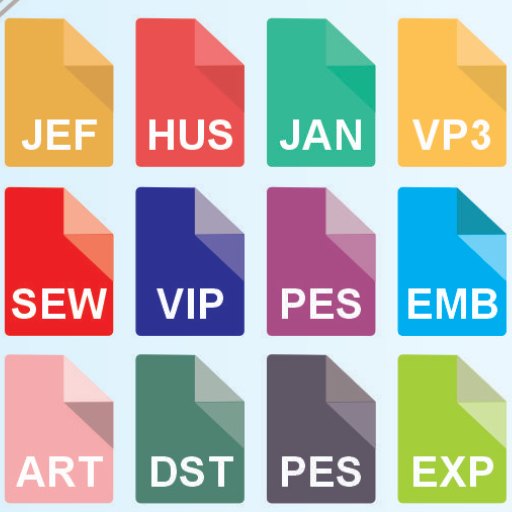
Embroidery design formats are digital files that guide embroidery machines in stitching patterns onto fabric. These formats vary among different brands of embroidery machines, each requiring specific file extensions. Some of the most common embroidery formats include:
- PES: Primarily used by Brother and Babylock machines, PES files are popular due to their compatibility.
- JEF: This format is compatible with Janome embroidery machines, offering precise stitch details.
- DST: Known for its simplicity, the DST format is widely used in the commercial embroidery industry and is compatible with numerous machines.
- EXP: Employed by Bernina machines, EXP files are known for their high-quality stitch execution.
- HUS: Husqvarna Viking machines utilize HUS files, providing excellent stitch accuracy.
Understanding these formats is essential for selecting the appropriate file type compatible with your embroidery machine, ensuring flawless execution of your chosen designs.
Understanding Embroidery Design Formats
When preparing to use an embroidery machine, proprietary formats must be considered when creating the digital pattern. Different brands and models have their formats. The following is a summary of what some of the best embroidery websites reveal.
Compatibility and File Extension: Each embroidery machine brand has a specific extension. For example, Brother and Babylock prefer the PES type due to its adaptability and ease of use. Other standard file formats include JEF, which Janome’s machines use, and DST, which is preferred for commercial purposes due to its simple format that works across many machines.
File Conversion Needs: Due to a difference in format across the various brands, modification tools tend to be a necessity. Among others, Wilcom’s TrueSizer and Embrilliance Essentials have become common as part of file converters as they maintain a high standard.
Quality and Detail: The format used during the embroidery can, in turn, influence the complexity and detail of the design, as stitch accuracy will be affected. Several file types guarantee high accuracy. They include EXP, Bernina, HUS, and Husqvarna Viking, which are usually used for more detailed work due to their superior performance.
Understanding these nuances is paramount so that, as an embroidery enthusiast or professional, you can optimize your designs according to the available machines for maximum effectiveness and quality.
Popular Formats: DST, EXP, HUS, JEF, PES, VP3, XXX
As a person who handles embroidery regularly, it is good to know the standard formats. DST is common in my experience and research because it works on many machines. The PES format is very adaptable and is common, especially with Brother and Babylock machines, as it is more versatile. JEF files work well exclusively on Janome machines where finer details of the design are required. There are benefits associated with each format, and when conversion tools can be used, design limitations on other formats can be addressed. It is not only easier to use these formats with the correct software that enhances the process of embroidering.
Choosing the Right Format for Your Embroidery Machine
When selecting the appropriate format for your embroidery machine, it’s essential to consider both the machine’s compatibility and the complexity of your design. Here’s a concise guide to help you make the right choice:
- Machine Compatibility: First, determine the formats supported by your embroidery machine. For instance, Brother and Babylock machines typically work best with PES files, while Janome machines prefer JEF files.
- Design Complexity: Formats like DST are well-suited for simple designs without intricate color changes, which explains their popularity in commercial environments. For more detailed designs, consider using HUS or EXP formats, known for maintaining detail accuracy and stitch precision.
- Conversion Tools: If your machine does not support your preferred design format, utilize conversion tools such as Wilcom’s TrueSizer or Embrilliance Essentials to adjust the file without losing quality.
- Technical Parameters: When dealing with formats, it’s crucial to consider resolutions, stitch count, and color changes, ensuring they align with your project’s requirements and machine capabilities.
By carefully evaluating these factors, you can choose a format that complements your design needs and seamlessly integrates with your embroidery machine.
How to Find Border Embroidery Designs for Home Decor?
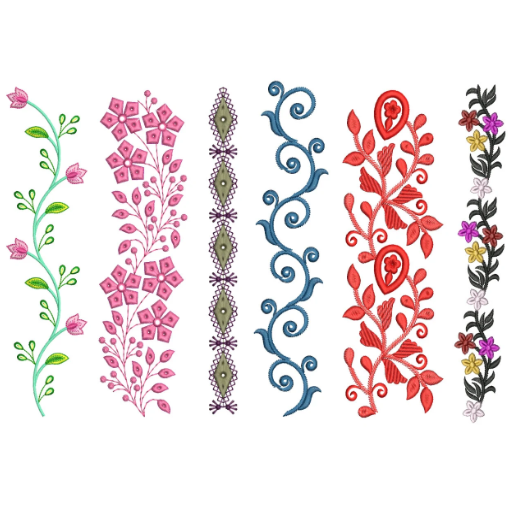
Finding border embroidery designs for home decor can be a delightful process that adds a personalized touch to your living space. Here are some concise steps to help you find the perfect designs:
- Online Design Libraries: Explore reputable online design libraries and marketplaces like Etsy or Urban Threads, where you can find border embroidery patterns in multiple styles and themes.
- Embroidery Software: Use embroidery software such as Hatch Embroidery or Embird. These programs often come with extensive design libraries and editing features that allow you to customize and create unique border designs.
- Embroidery Communities: Join online forums and social media groups focused on embroidery. These communities are excellent resources for discovering designs shared by fellow embroidery enthusiasts, and you can also request specific styles or suggestions.
- Pinterest and Inspiration Boards: Use platforms like Pinterest to create boards dedicated to embroidery border designs. Such boards can serve as a valuable visual reference and help you track styles and patterns that catch your eye.
- Pattern Design Books: Consider investing in books that offer pattern designs specifically for embroidery. These books provide a curated collection of designs, often with helpful tips on best use for home decor projects.
By leveraging these resources, you can find border embroidery designs that elevate your home decor while reflecting your style.
Adding a Touch of Elegance to Home Decor Items
Innovating an element of style to decorative accessories and items surely helps develop your abode into a personal space. One of the practical techniques is by utilizing exquisitely embroidered fabrics. It is well known that embroidery is a powerful tool. The appropriate designs and patterns can enhance decorative elements, such as scatter cushions, table coverings, and window treatments. As per the best sources available online, some critical steps include sourcing the suitable materials from which to make the fabric that is suitable for the embroidery, picking the threads that will complement the design but also get along with the rest of the room color, and embroidery embellishments through processes like satin stitching, as well as the use of metallic threads to give dimension and shine. It is essential to note the amount of attention to detail involved in applying a single theme throughout the entire decor because it helps create style, which is an inviting factor in all rooms.
Designs for Linen and Other Fabrics
I often look for guidance and illustrations online when searching for patterns for linen and other clothes. The patterns selected should match the linen’s texture and natural color. Since linen is a natural fabric, light and whimsical designs such as flower or leaf patterns suit it best. Or, in an attempt to use more modern styles, geometric designs would make a good contrast. Texturing techniques such as chain stitch and French knots are also often recommended. This way, I ensure that the designs are also contemporary and that today’s interior design trends are not compromised.
Incorporating Floral Border Embroidery Design into Your Projects
Integrating floral border embroidery designs into your works can aim for elegance and sophistication. First, one of the most important tasks is fabric selection; here, threadable fabrics like linen and cotton are very convenient. Either cotton or silk threads would be better, as they give fine finished products. Using thread tensions of about 2.5 to 3.0 grams is wise to minimize puckering. Ideal needle sizes for working on these fabric types are 75/11 or 80/12, suitable for most embroidery stitches.
Awareness of the pattern’s scale is essential when designing floral borders. Always confirm that the motifs are not excessively large or too small to decorate the item. Most of the time, flowers and leaves are outlined using running or satin stitch, while their centers are decorated with French knots. For the best results, use medium-weight interfacing to ensure the fabric is smooth and flat. If you have attended to these aspects, you can obtain a reasonably professional appearance that would supplement any decor design.
Where can you access Borders Machine Embroidery Designs instantly?
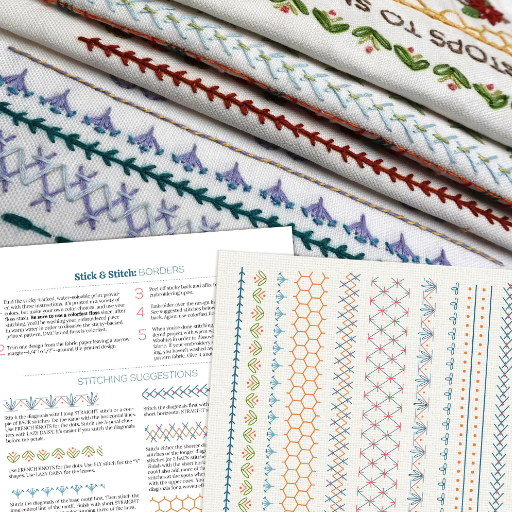
If you’re looking for ways to incorporate border machine embroidery designs easily, you could check out some online shops. Websites like Etsy, Urban Threads, and EmbroideryDesigns.com have many downloadable designs that consumers can buy by the pack or per item. Also, some embroidery programs, such as Embrilliance or Hatch, allow people to view and purchase designs from their sites, including custom options to view the designs before downloading them. If you are short on money, consider becoming a member of embroidery-oriented forums or groups on Facebook, where people post crochet or knit designs free of charge or at lower prices made by individual artists. These methods effectively connect beautiful borders to your designs without much effort or time.
Exploring Instant Download Options
Three notable sites come to mind when searching for machine embroidery designs that can be downloaded instantly. First, there is Etsy, where independent sellers set up their borders for sale. It has an extensive repertoire that caters to customers’ differing needs and preferences, and it is well organized to locate any specific border needed quickly. Second, Urban Threads offers more modern styles that depart from the standard ones as they focus more on edgy and exciting designs. They have single designs and sets, often themed but more modern in how they are crafted. Finally, EmbroideryDesigns.com offers a broad scope of designs, from vintage models to present-day trends, including views and personalization tools. Through these platforms, it is easy to purchase new designs and download and use them within your embroidery ventures, thus allowing you to take your creations to the next level without too much hassle.
Using Embroidery Design Platforms
When working on embroidery design, I begin with several sites I consider credible, such as Etsy, Urban Threads, and EmbroideryDesigns.com. With Etsy, I can see a wide range of original design ideas from independent artists to find something that meets my requirements. I use Urban Threads, where I can find modern and non-traditional designs that constantly motivate me to try to create something when I am feeling artistic. Finally, there is EmbroideryDesigns.com, which I use for its reasonable amount of modern and vintage designs and its efficient design editing features to help me modify the designs for my projects. These platforms allow me to find beautiful and expressive embroidery designs almost in no time, thus saving me a lot of time and improving my crafting experience.
Benefits of Free Borders for Creative Projects
Unrestricted borders bring multiple benefits to creative works, both visually and adding to your creation’s purpose. To begin with, the use of free borders provides a cheap way to decorate, which gives space for creators to spend money on other sections of their creations. These borders, linguistically speaking, are often provided in formats such as.DST and PES are usable on almost all embroidery machines. Further, most pieces come in different sizes to meet the needs of various projects without altering the design. The other most important advantage is that they are easy to find; free borders can be easily found on the internet and expand the resources at hand in a few clicks. Overall, using free borders as decorations in creative works improves the output and is time and cost-effective.
What sizes are available for machine embroidery designs?
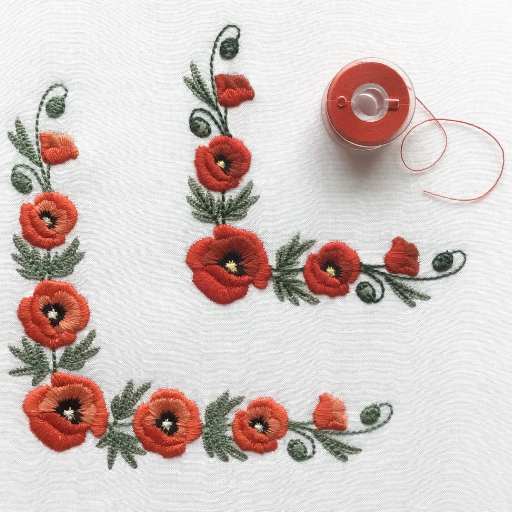
A great deal of project requirements can be accommodated with designs that are available in Machine Embroidery in differing sizes. Most designs are in 4×4, 5×7, 6×10, and many other standard sizes. These sizes are relative to the size of the embroidery machine heads and allow for numerous machines. Various designs may also be custom-made to suit small and big projects to reach the targeted design and scale. Such variances in sizing assist the creator’s range of projects, from a simple stitch to cross-stitching or delicate in-depth patterns. Embroidery designs and their dimensions suited for these tasks can easily be found.
Overview of 4 Sizes, 5 Sizes, and 3 Sizes
As far as Machine embroidery is concerned, it is important to note the sizing options as they greatly impact the end product. Key embroidery sites have done research that under the 4 Sizes category, the designs are provided in the approximate sizes of 4×4 inches, 5×5, 6×6, and 8×8. Such size factors allow for some degree of freedom in the case of smaller projects and are widely employed in monograms or patches.
The range for 5 Sizes gets wider to include 4×4 inches, 5×7 inches, 6×10 inches, 7×12 inches, and 9×14 inches. This range assists mid-range projects supporting a bit more complexity in terms of the design and pattern, including embroidery on decorative linens and complements on garments.
In the 3 Sizes category, on the other hand, some of the designs offered are 4×4 inches, 5×7 inches, and 6×10 inches. This set is fit to handle those designs projecting the detailed small designs or more prominent logos on dependent items like garments. The wide range of dimensions allows various artwork sizes to be realized without technical or artistic compromises.
Choosing the Right Size for Edges of Clothing
I try to have the angle of embroidery in mind along with the actual motive or purpose of the clothing while deciding on the edges. I draw from the experience of other designers by looking at the best embroidery websites. There is no need to compromise on aesthetics while employing practical measures. For more minor children’s clothing, fine detailing, and smaller edge work, 4×4 inch or 5×7 inch images work well. They tend to be visually appealing and do not overshadow the other clothing. Larger pieces like jackets and dresses would sometimes require more dominant edging; in such cases, 6×10 or 7×12 inch images work better. Ultimately, choosing the right design produces the desired appearance for the clothing, and the entire design is balanced so that the embroidery does not take all the attention away from the garment itself.
Customizing Placemats and Tea Towels
For example, stitching enhances the design of placemats or tea towels. Well, the artwork is used for any stitching on linens, such as the table mats. For instance, on placemats, artwork may be designed and made for about 5×7 inches or about 6×10 inches, which allows the material fabric to do the decoration and the mat to perform its duty. However, the tea towels need stitchwork to be about or not more significant than four inches, as it may interfere with their use. While personalizing these products, linen and cotton are some fabrics that can be used as they last long when engraved. While stitching, the supply yarn should match, coordinate, or contrast the fabric colors to have the embroidery designs complement the fabric. Once one can decide on such factors, one can create an exciting mat or towel for the dining and kitchen decorations.
How to Enhance Your Projects with Embroidery Supplies?
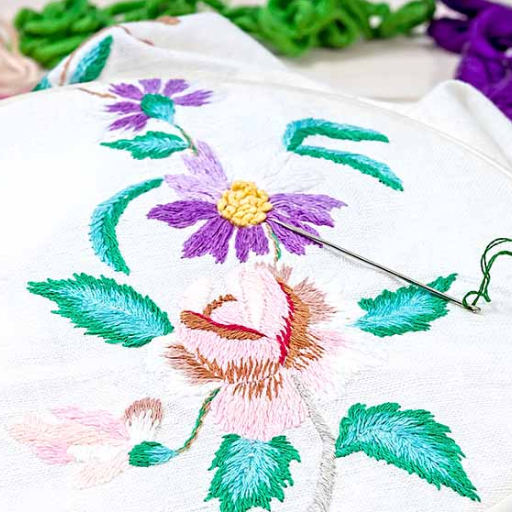
To successfully use embroidery supplies in your projects, start by researching the suitable materials for your project. Threads can also be important because they determine how your design will look; for instance, threads can be in silk, cotton, threads, or even acrylic. Afterward, decide which type of hoops you require alongside the size of your piece of fabric and the embroidery pattern. Another factor is the stabilizers, they have stabilizing effect on fabrics, keeping them from puckering and giving the final product a better finish, select from the various available types based on how heavy the fabric is and the complexity of the design, these types include cut-away, tear-away, and water-soluble stabilizers. Additionally, different needles can work well with various fabrics, easing the stitching effort and increasing accuracy. After this, including beads, sequins, or sculpture patches can do wonders in altering the elegance of your embroideries.
Using Thread Colors to Elevate Designs
Choosing the appropriate colors for your threads can elevate your embroidery design to the next level. First, you should familiarize yourself with color theory. This practice helps to understand why specific colors dominate while other models are more successful. If no complementary colors are found in one’s environment, artwork can be used. Choosing similar colors or colors on the opposite side of the color wheel can also be beneficial. Choose colors wisely according to the fabric you intend to design and the market that that cloth has a target. Try bright colors on plain fabric and dark threads on patterned fabric. Play with multi-color threads, too. Color placement is a vital measure that also changes the state of the embroidery—the ability to place colors wherever without the worry of placement gives new life to your projects.
Incorporating Stabilizer for Better Results
Integrating stabilizers into my embroidery works has been a game-changer for me! The thin weaving of a fabric helps prevent stretching and buckling for a superior finish. There has been a common misconception that all embroidery needs shredding stitches, where one can differentiate one project from another. Cut-away, tear-away, and water-soluble are the most used tools. Fabric and stitch density guide my selection. For densely stitched designs, it is best to work with robust stabilizers as they help to achieve a consistent look. Most items nowadays can be composed of high-stitching density fabrics; hence, they require additional assistance. The bottom line is that stabilizer selection easily qualifies the true potential of an embroidery project based on how exquisite the final work is and how easy it was to achieve that.
Exploring Satin Stitch and Running Stitch Techniques
As it permits satin stitching, one must first grasp how this type of stitching idealizes an area for filling up. Important parameters for a satin stitch include the thickness length, which is usually advised to be less to ensure tension is homogenous and beautifying gaps are avoided. Certain conditions, such as the type of fabric and the complexity of the design, may dictate the thickness of the stitches, for instance, 1-3 mm stitches. Considering that satin stitches can be thick, it is advisable to cut away stabilizers to avoid distortion in the fabric.
On the other hand, a running stitch is also one of the first steps when considering outline borders and light materials. A running stitch contains stitches that are dashed lines and can be suitable for lightweight materials. A stitch length of 1.5s-2.5 mm is ideal for smooth and less rough curves. Such stitches cause little tension on the fabric; hence, a lighter victoria stabilizer or tear away is effective. In embroidery works, these techniques can be combined with threads of varying thicknesses and colors to make visually profound work.
References
Frequently Asked Questions (FAQ)
Q: What is included in a typical machine embroidery design set?
A: A typical machine embroidery design set includes at least six designs, ensuring a variety of patterns to choose from. These designs often come in multiple sizes and styles to suit different embroidery projects and color schemes.
Q: In how many formats are the embroidery design files provided?
A: Our embroidery design files are provided in 8 formats, including popular ones like VIP and bx, making them compatible with various embroidery machines.
Q: What sizes are available for your border designs?
A: Our border designs are available in various sizes, including 4×4, 5×7, 6×10, and 8×8, allowing you to personalize your projects.
Q: How can I suggest a design to you?
A: If you have a design in mind, please suggest one through our website’s contact us page. We welcome feedback and suggestions for new designs.
Q: How can I download your app to access more embroidery designs?
A: You can download our app from the app store on your mobile device to access a more comprehensive selection of embroidery designs and patterns and discover new collections regularly.
Q: What should I do if I encounter issues with my embroidery design files?
A: If you experience any issues with your embroidery design files, please contact us, and we will provide a solution. Our support team is always ready to assist.
Q: Can I read product reviews before purchasing a design set?
A: Our website, embroiderydesigns.com, offers product reviews to help you find the perfect match for your embroidery projects. Reviews provide insights into the versatility and quality of our designs.
Q: What is the price range for purchasing your designs?
A: The price range for purchasing our designs varies. You can use the price filter. From and price filter.to options on our website to find designs within your budget.
Q: How are purchased designs delivered?
A: Purchased designs are sent as a single zip file, which includes all the necessary embroidery supplies. Subscribing to our service ensures you have everything you need to start your project immediately.






